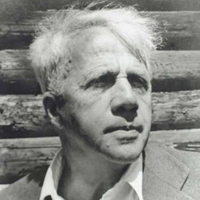Home Burial by Robert Frost: Summary and Analysis
This dramatic poem 'Home Burial' was written and published in 1914. In this dramatic narrative Frost has depicted a critical situation arising between husband and wife over the death of their son. There is the drama of social adjustment in human relationship. The son dies. This breaks the wife completely. She is standing at the top of the staircase and peeps through the window and sees that her husband is digging the grave of the child. On returning home, he talks of daily concerns.

